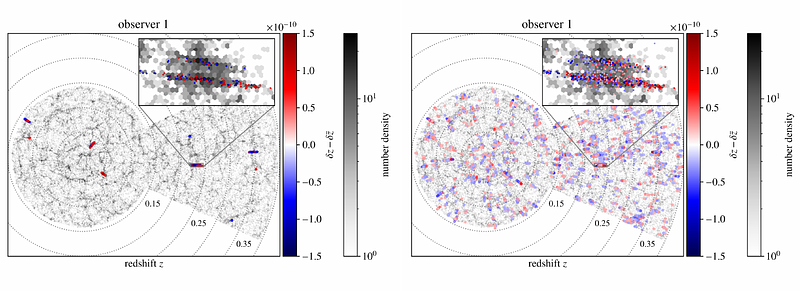Redshift Drift in Relativistic N-Body Simulations

Redshift Drift in Relativistic N-Body Simulations
Alexander Oestreicher, Chris Clarkson, Julian Adamek, Sofie Marie Koksbang
AbstractThe cosmological redshift drift promises to be the first observable directly measuring the cosmic expansion rate and should be detectable with upcoming surveys by the Square Kilometre Array and the Extremely Large Telescope. To prepare for these upcoming measurements we study the redshift drift in detail using the relativistic N-body code $\texttt{gevolution}$ focusing on inhomogeneity-induced fluctuations. Using a ray-tracer, we calculate the redshift drift directly from the light cone at two different time steps. To investigate observer-dependent biases we consider 10 different observers. We find that inhomogeneity-induced fluctuations in the redshift drift can in extreme cases be of the same order as the cosmic signal for $z\lesssim0.15$. By comparing our results to first-order perturbation theory, we find that the extreme outliers are due to peculiar motion in over-densities and can be described by first-order perturbation theory to percent precision. We calculate angular power spectra that fit very well with our theoretical predictions based on perturbation theory at linear scales and show a surprisingly large non-linear signal. This shows that redshift drift not only has the power to measure the background expansion, but could also deliver information about the velocity and acceleration fields in clusters.